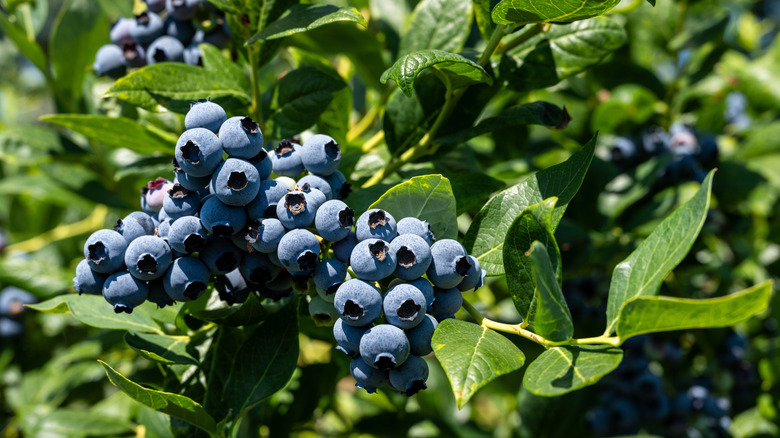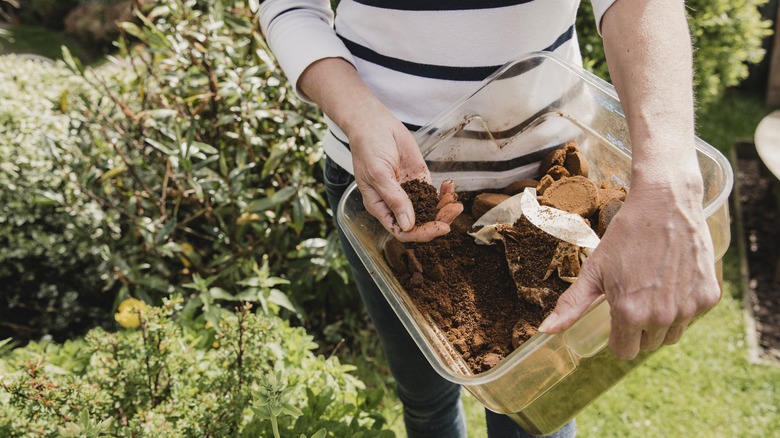Sprinkle Coffee Grounds On Your Blueberry Plant And Watch The Magic Happen
For many of us, the morning doesn't start until we've had a cup of coffee. In fact, two-thirds of American adults surveyed by the National Coffee Association say they drink it daily, adding up to about 516 million cups of coffee each day across the country. That's a lot of coffee and, as a result, a lot of coffee grounds. It makes sense that we see various purposes for used coffee grounds— for example, how to use the grounds as houseplant food — to reduce waste and to find more natural solutions for needs around the home and garden.
Turns out people aren't the only ones who benefit from the pick-me-up effects of coffee. Used coffee grounds, which are made up of 2% nitrogen — along with smaller percentages of other plant-friendly nutrients like phosphorus and potassium — can be used to amend the soil of nitrogen-loving blueberry plants, among a list of other plants and shrubs that like coffee grounds. In essence, the nitrogen behaves like a slow-release fertilizer, only becoming available when coffee grounds are processed by microorganisms like bacteria and fungi in the soil.
Coffee grounds also have the potential to kill slugs, which target low-hanging blueberry bushes. These common garden pests leave their slimy trails throughout the bush as they devour the plant's leaves and fruit. Slugs that crawl through soil drenched with a coffee ground "tea" made with one part water to two parts strong coffee are likely to die from caffeine poisoning.
How to use coffee grounds in the garden
Gardeners have multiple options for giving their blueberry plants a dose of coffee grounds. If you're simply adding a layer of grounds to the top of the soil, keep that layer thin — no more than a half-inch. If the layer is too thick, the grounds can end up blocking out essential moisture and air. For better results, a layer of leaves or bark mulch will help the grounds retain their moisture. You can also mix in about a half-inch of grounds through the top several inches of the soil.
Another option is to water plants with coffee by making a coffee ground "tea" by mixing 2 cups of grounds with 5 gallons of water. Let it steep for a few hours or overnight before straining out the grounds and using it around your blueberry bush. Adding grounds to your compost pile is another option, but one that will require patience to wait for the materials to break down.
When composting, be mindful of the balance of "greens" (nitrogen-rich materials) and "browns" (carbon-rich materials). Because coffee grounds are in the green category, you'll need to add the right proportion of brown items. A good recipe is one part coffee grounds, one part of another green material, and three parts dry leaves (or other brown item). Adding more than 20% of coffee grounds could be harmful to plants.

